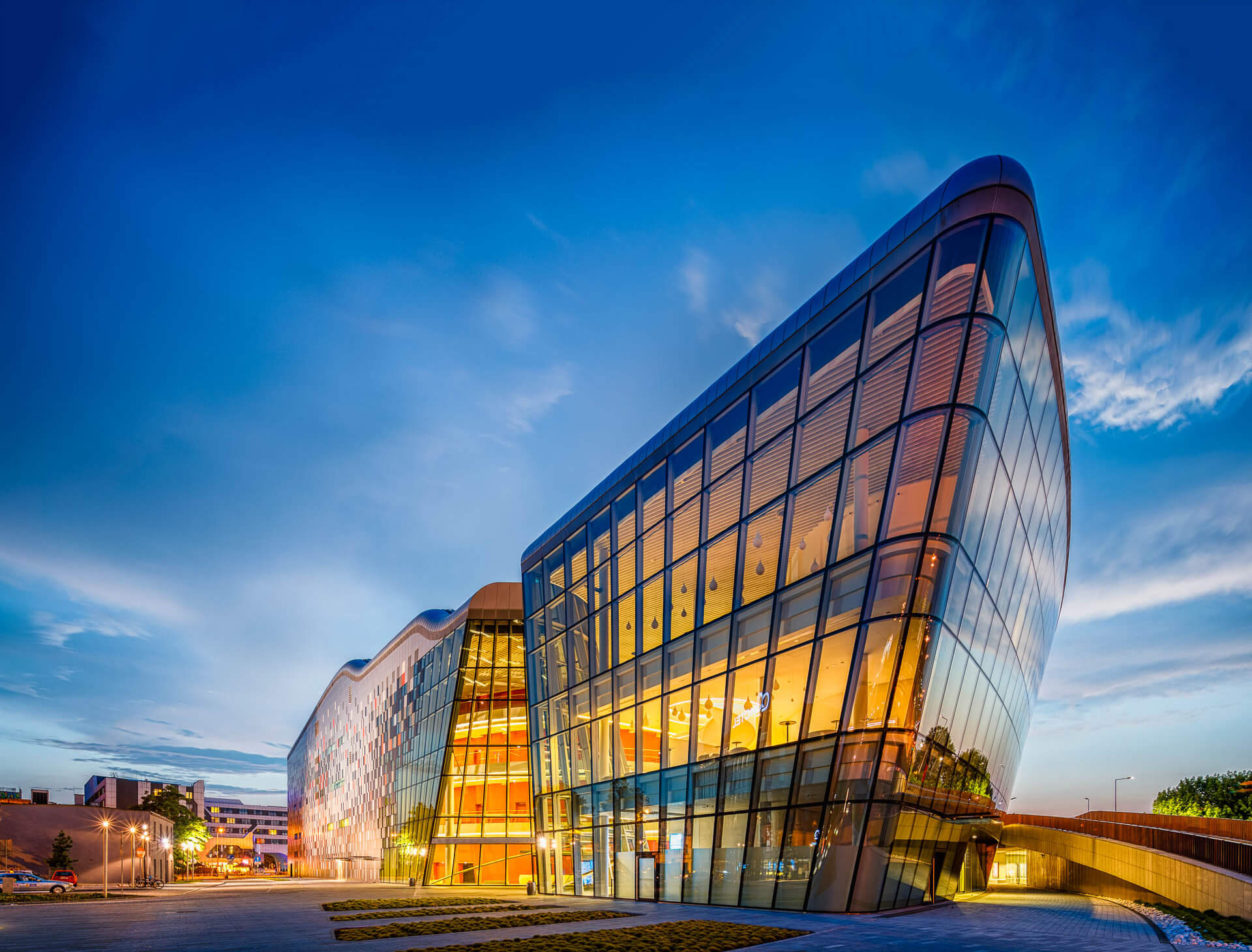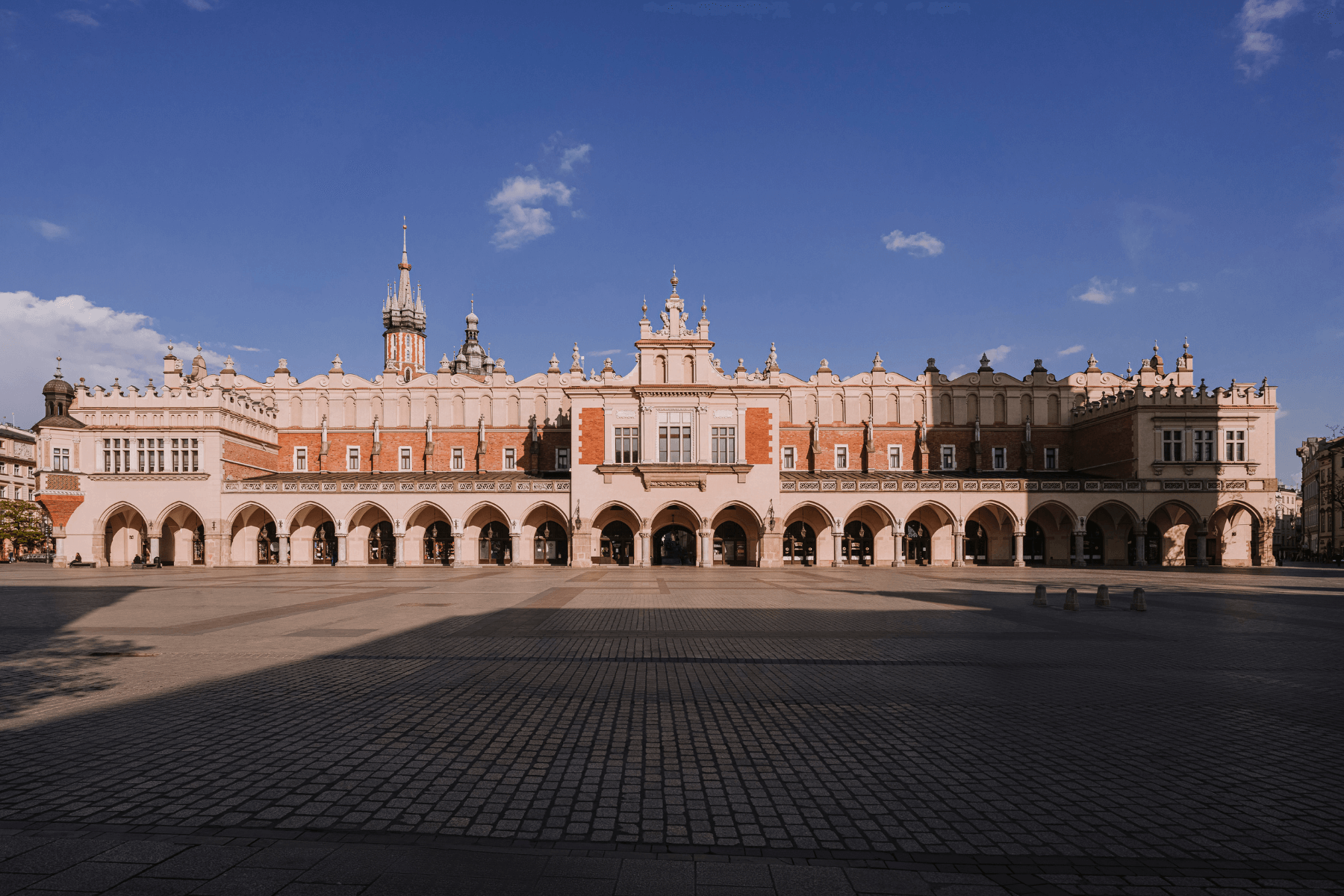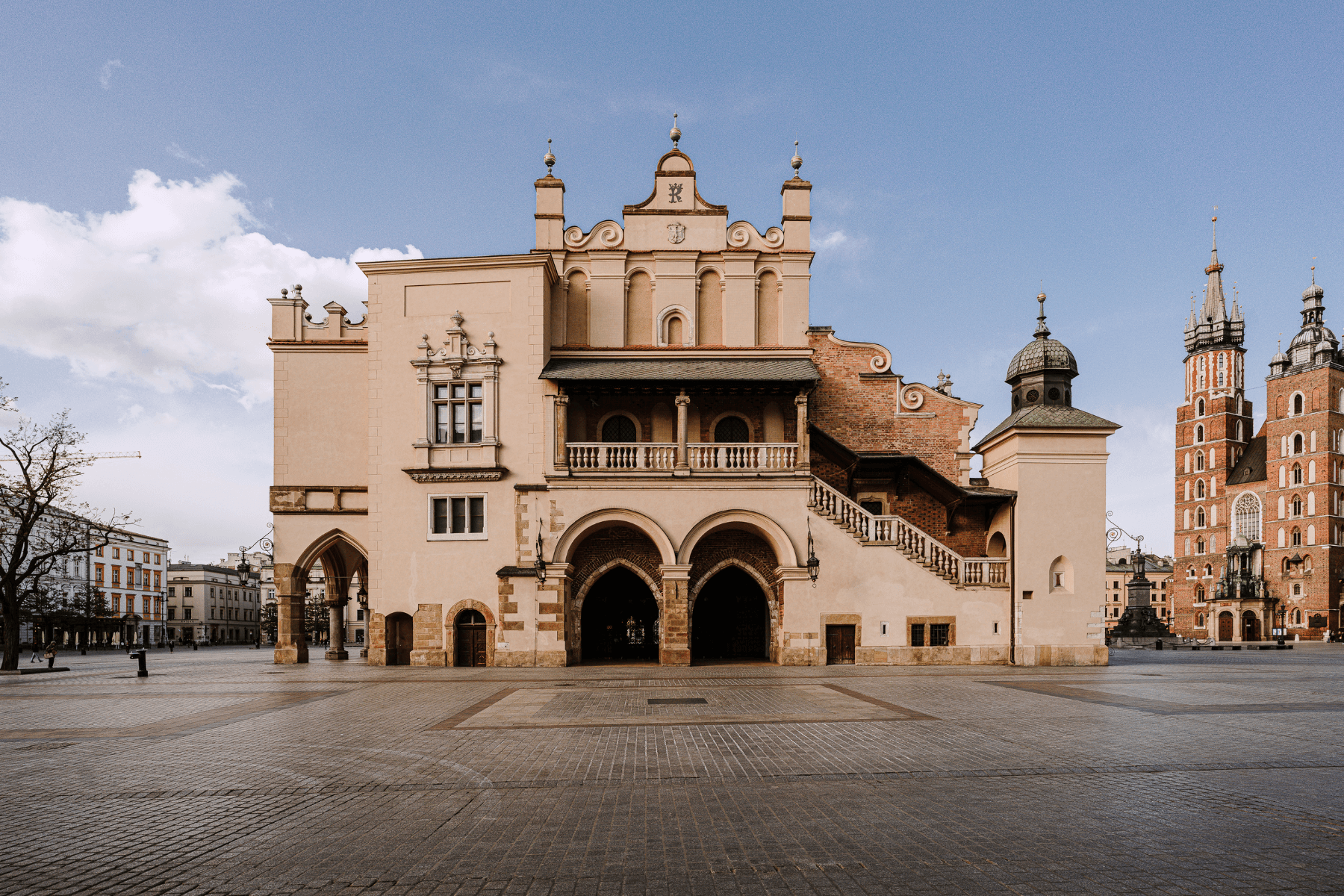ICE Kraków Congress Centre
ul. Marii Konopnickiej 17, 30-302 Kraków
The ICE Kraków Congress Centre is the business and cultural flagship of the city. Located in the very heart of Kraków, it is a convenient place for the organisation of diverse events: from international congresses, conferences, symposiums and business meetings, through cultural events such as concerts, opera, theatrical and ballet performances, to social meetings.
The ICE Kraków Congress Centre is a state-of-the-art, multifunctional venue in the very heart of Kraków. It has been described as the finest setting hosting business and cultural events in Małopolska since 2014.
The well-connected venue has four main halls: the Auditorium (capacity 1915), the Theatre Hall (capacity 600), the Chamber Hall (capacity 300) and the Conference Room Complex (capacity 400). ICE Kraków also has extensive infrastructure and boasts a glazed, three-storey foyer offering stunning views over Wawel Castle, the Vistula River and the Kazimierz district, providing comfortable space for a total 3200 visitors to myriad events.
ICE Kraków is well-suited to hosting business meetings such as congresses, conferences, corporate events and product launches, as well as cultural events including festivals, concerts, spectacles, galas, exhibitions and community projects.
The ICE Kraków Congress Centre is located in the very heart of Krakow, opposite the Wawel Castle, next to one of the main transport hubs.




The Polish Aviation Museum
al. Jana Pawła II 39, 31-684 Kraków

The Polish Aviation Museum is located on the area of the original Cracow airfield Rakowice-Czyżyny. The Museum’s premises include both historic buildings of the former airfield and newly built ones. The collection consists of more than 200 fixed- and rotary wing aircraft, more than 100 engines, weapons, uniforms, etc. Among the most valuable exhibits are unique World War One aircraft from Germany, Great Britain and Russia, the only surviving Polish pre-war aircraft, such as the PZL P.11c fighter, PWS-26 trainer, WWS Wrona bis and WWS Żaba gliders, World War Two aircraft such as the Supermarine Spitfire LF Mk XVIe and Messerschmitt Bf 109G-6 fighters, Polikarpov Po-2 bomber and a large collection of Soviet and NATO Cold War-era combat aircraft.
The Museum’s main building offers two exhibition halls, a conference room and cinema. The area of open air exhibition is also available to let, as well as the area outside the museum’s fence, which enables organizing large events, such as concerts, festivals etc.
Forty Kleparz
ul. Kamienna 2/4, 30-001 Kraków

"Forty Kleparz" is part of the nineteenth century walls, fortress, preserved in almost perfect condition.
All the buildings are Fort Kleparski (Bastion III Kleparz), built between 1856-1859. One of the advantages is its interior - the traditional nineteenth-century fortifications successfully exploited in a modern and elegant way, like the finest of its kind in the world.
We strive to create a creative space with a cultural, business and entertainment character. We started with the club, creating a recognizable brand that is associated with excellent music and the biggest stars of the Polish music scene for Cracovians. Now we are sharing the effect of work on the second stage of our plan. We offer a year-round restobar serving world cuisine, a summer part of the restaurant - an orangery, a lounge bar - a relaxation zone in the restored part between the rampart and the redita of the fort - and a summer stage where concerts and events take place. In September, we will open further parts of our complex: a banquet and exhibition hall, a museum room dedicated to the topic of fortifications and a historical path located on the outer embankment. In the future, the concert courtyard will be covered with a roof, thanks to which a banquet and concert hall will be created, which will accommodate 3,000 people.
Sukiennice
Rynek Główny 1/3, 31-042 Kraków

The Sukiennice (Cloth Hall) is a large market hall erected in the 13th century in the middle of the Market Square, extended in the 14th century in the Gothic style and remodelled in the mid-16th century after Renaissance fashion. Following its restoration in the years 1875-1879, it began to serve a representative function and became a venue for grand balls and patriotic celebrations. Due to their location and character, the halls on the first floor of the Sukiennice building became the first seat of the National Museum in Krakow. Initially, the Museum shared this space with the Society of Friends of Fine Arts.
History
On 7 October 1879, the Krakow City Council founded the first National Museum on the Polish territory. The exhibition inaugurating the activity of the Museum was opened on 11 September 1883, on the eve of the bicentenary of the Battle of Vienna, in two rooms on the first floor of the Sukiennice, facing Bracka street. Since then, the permanent gallery of the National Museum was housed in this location. The first director of the new institution was Władysław Łuszczkiewicz (1883-1900), followed by Feliks Kopera (1900-1949).

In 1901, the National Museum took over the entire floor of the Sukiennice. 1902 and 1903 saw the creation of a modern museum gallery, which remained almost unchanged until 1939. The display presented arts and crafts from the 15th to the 19th century, painting and sculpture of the second half of the 19th century, drawings and watercolours, national memorabilia as well as archaeological and ethnographic exhibitions. During the First World War the Museum activity was interrupted for a few months, and during World War II - for five years, from 1939 to 1945.
In the years 1950-1956, under the directorship of Tadeusz Dobrowolski, the Sukiennice halls offered a new exhibition which presented exclusively Polish painting and sculpture from the Enlightenment to the end of the 19th century. The same chronological order of the displayed works was preserved by Directors Adam Bochnak (1957-1962), Jerzy Banach (1963-1974) and Tadeusz Chruścicki, under whose administration the Sukiennice Gallery was remodelled by Mieczysław Porębski, Andrzej Pawłowski and Jan Kolanowski. This time-honoured chronological order of the exhibition is still visible today.
A fundamental change was brought about by Director Zofia Gołubiew (since 2000). The Gallery underwent conservative renovation, gaining a new layout and decor. All the museum halls existing in the Sukiennice were transformed and modernised and new spaces were acquired - on the ground floor, mezzanine and terraces.
The present layout of the exhibition was designed by Barbara Ciciora and Aleksandra Krypczyk, who took into consideration the interior changes devised by Jacek Cupryś. The aesthetics of the Sukiennice Gallery still refers to the 19th-century manner of displaying art. 
The exhibition in the Sukiennice is presented in the following four rooms:
- The Bacciarelli Room: the Enlightenment – which displays the art of the second half of the 18th century and the early 19th century,
- The Michałowski Room: Romanticism. Towards National Art – which focuses on national themes in art,
- The Siemiradzki Room: Around the Academy – which presents issues relevant to the academic curriculum in the second half of the 19th century,
- The Chełmoński Room: Realism, Polish Impressionism, Beginnings of Symbolism – which displays the works that herald the art of Młoda Polska (Young Poland) movement, exhibited in the main building of the Museum.
The Gallery of 19th-Century Polish Art is a continuation of the Gallery of the Art of Old Poland from the 12th to the 18th Century, situated in the Bishop Erazm Ciołek Palace. The display exhibited in the Sukiennice is chronologically followed by works presented in the Gallery of 20th-Century Polish Art in the Main Building of the National Museum in Krakow.
TAXI
We recommend getting to the venues via taxis.
